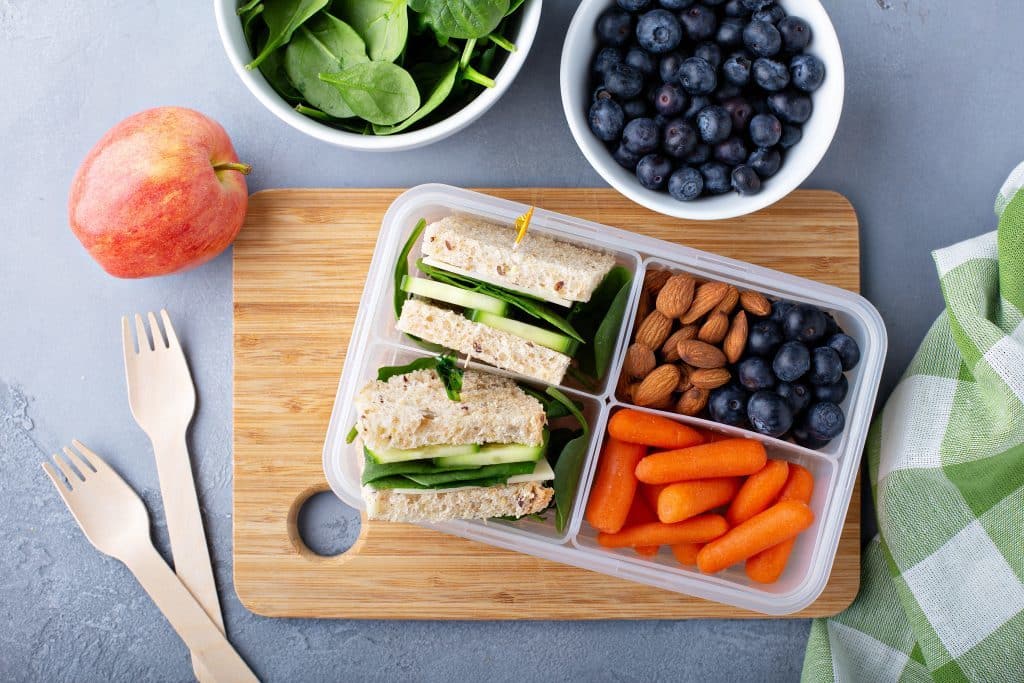For many adults, the term “snack” is associated with eating food considered “junk”. It’s the biscuits, crisps, processed bars, sweets and chocolate types of food that many people reach for during snack time. As such, the thought of snacks being part of a healthy diet can seem somewhat of an oxymoron. But snacks are important for children. Snacks can, in fact, be part of a healthy diet and should be offered to toddlers and young children.
In an effort to increase intake at main meals, many parents restrict their children from having afternoon and/or morning tea snacks. Whilst this many make sense in theory; in practice it is rarely helpful to the child or their nutrition intake. We often encourage parents to re-name snacks to “mid-meals” as we see this as a helpful was to switch thoughts from the biscuits and sweet kind of snack food options, towards core-foods such as fruits, cereals, and calcium-rich items.
Why snacks?
For nutritional, social and skill-based reasons, mid-meals should hold a key place in a young child’s day. Some key reasons for snacks include:
Boosting mood and endurance
For toddlers and young children, mid-meals have a role of supporting endurance, mood and concentration at main meals. Snacks act as a stepping stone to main meals and should be considered an important part of young children’s daily nutrition.
Optimising nutrition
Young children have high nutritional requirements, as their growing bodies and minds need significant amounts of energy and nutrients to ensure that growth, learning and development are supported. Incorporating snacks during the day means that toddlers and young children have opportunities to “top-up” their nutritional intake to help them reach their nutritional needs.
Learning skills
Learning to eat is imperative to good nutrition. Young children need to practice eating to first learn oral skills for consumption and later, skills in independence in eating. Mid-meals offer a time for practicing eating skills and can be a great time to trial new textures, menu items and the concept of sharing with family and friends.
Reduced parental stressors
In households where mealtimes can be stressful, mid-meals offer an opportunity for children to consume nutritious items without pressure or expectation to eat. Parents tend to hold less stress about intake at mid-meal times which in turn promotes positive eating practices.
Adding variety
Mid-meals provides a great opportunity for increasing variety into children’s diets, as the concept of “eating a rainbow” is expanded on. The inclusion of seasonal fruits, tinned foods, dried fruits and vegetables facilitates variety in a simple manner. Include items that are leftovers from dinner, roasted in preparation for snacks and incorporated into other delicious items, such as muffins, fritters and mini-pancakes.

How to snack
Type
There is a difference between structured mid-meals and the concept of grazing. Structured snacks are the morning and afternoon-tea designated mealtimes replicating what children participate in at childcare. Whereas grazing is the style of eating that has less structure, tends to be erratic; can feel like the child is “eating all day”. There is a strong body of research that indicates children who graze have poorer nutritional intakes than those that eat at structured mealtimes. This research shows that while parents feel that the volume of food their child eats is reassuring, unfortunately nutritional intake is often compromised.
Frequency
Structured meal times allow children to have regular opportunities to “boost” their intake; top-up on energy and nutrition, as well as practice their eating skills. They also allow parents the reassurance that if food isn’t accepted at a particular meal or mid-meal time, there will be another opportunity to eat in just a few hours. For toddlers, children and teens an opportunity to eat every ¬ 2.5- 3 hours is considered appropriate during the day.
Environment
Having a routine around mealtimes and mid-meals is important. Routine cues the child to acknowledge “it’s time to eat” and avoid distractions such as play. Like main meals, midmeals should take place at a designated eating location. A location refers to a place that the child can sit in an upright, well supported position and is essential for eating well.
Duration and volume

Mid meals are a “mini meal” and therefore do not require as long to eat. Volumes for “mini meals” are to be “top-up” volumes rather than volumes of main meals. Each child has an appetite that will vary and nutritional requirements differ between children. As a guide for young children a serve of fruit, yoghurt, cheese and crackers or 1-2 mini meatballs would be appropriate for most mid-meals.
What to provide
In order to support nutritional intake, and avoid a preference (and sometimes what seems a dependence) on discretionary items such as biscuits, sweets, cakes and alike, it’s important to offer mid-meal items mainly from the core-food groups. The core-food groups include wholegrain breads and cereals; fruits, vegetables, lean meat, poultry, eggs nuts, seeds, vegetables and calcium rich items. It is vital to provide a range of different items throughout the week, in order to encourage variety whilst ensuring know that children do not become accustomed to a smorgasbord of alternatives.
Summary:
- Provide foods from the core food groups. This means fruits, vegetables, dairy (or dairy alternatives that have calcium added), grain and cereal products and lean meat, poultry, nuts, eggs and legumes.
- Avoid foods considered “junk”. Remember that toddlers and young children need 0-1 servings of these daily.
- Space mid meals to be about 2-3 hours away from main meals.
- Encourage a mealtime routine for mid meals. This includes packing up toys and washing hands, before moving to a designated eating area.
- Keep the serving size smaller and eating time shorter than main meals. 10-15 minutes is sufficient.
- Serve parts of the main meal (in a smaller volume) at mid-meal time.

Renae Reid is the ToBeMe Early Learning Thought Leader for Nutrition and Dietetics. She is an Accredited Practising Dietitian (APD), Accredited Nutritionist (AN) and founder of Ambrosia Dietetics. She holds a Master’s of Nutrition and Dietetics and Bachelor of Applied Science (Nutrition and Food) and specialises in the care of infants, toddlers and Children.
Comments are closed.






